This guide provides all the information you need about the Great Tit, including its facts, song, and diet. If you’re interested in learning more about this fascinating species or want to hear its beautiful songs for yourself, be sure to explore all of the resources listed below!
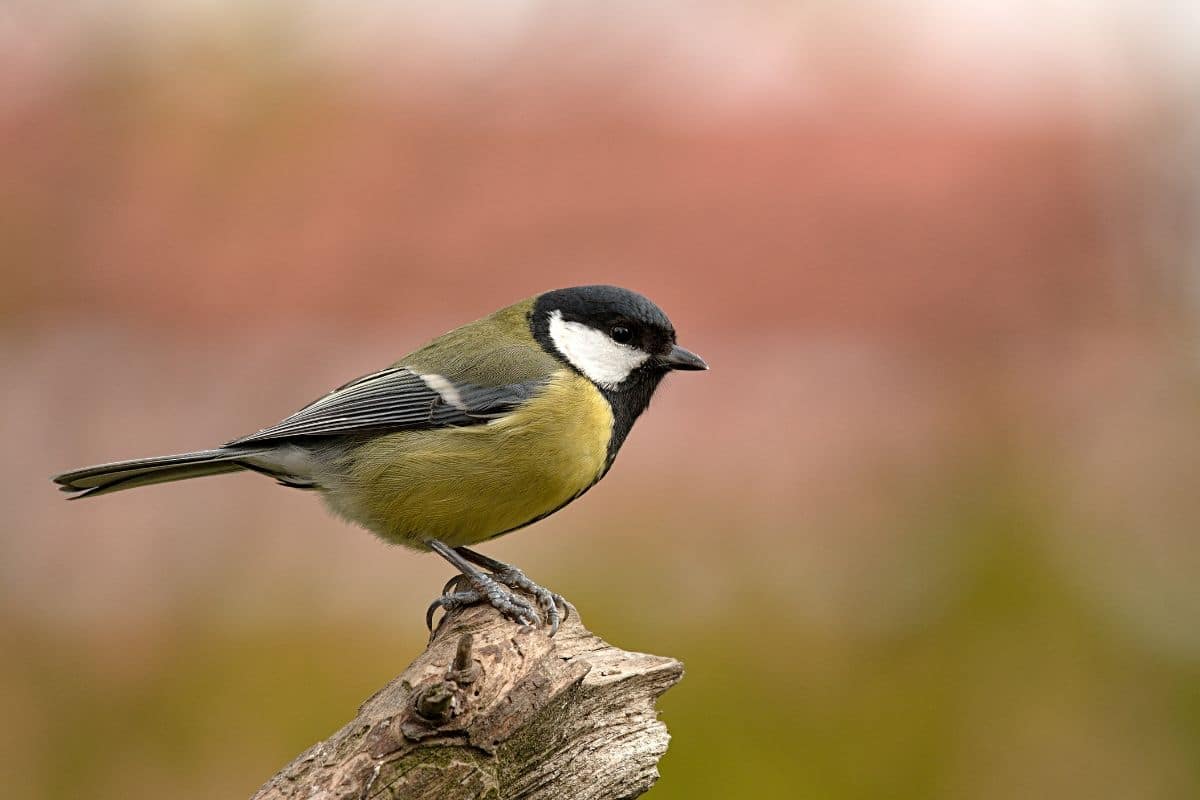
| Classification | Measurements |
| Scientific Name: Parus major | Length: 14cm |
| Other Names: Great Tit | Wingspan: 24cm |
| Family: Tit/Paridae | Weight: 18g |
| Conservation Status: Green/Least Concern | Average Lifespan: Up to 12 years (in the wild) |
| When to see it: All year round | Where to see it: Woodlands, gardens, parks |
Contents
The Great Tit: Basic Overview and Information
The Great Tit is a small European bird located in many parts of the world. They are known for their distinctive black and white plumage, which makes them easy to identify. The Great Tit is a lively and acrobatic bird with a loud and melodious song.
In addition to their looks, Great Tits are known for their behavior and diet. Typically found in wooded areas near open spaces, the Great Tit feeds on several insects, seeds, nuts, and fruit.
Great Tit Lifespan
Due to its adaptability and long lifespan, the great tit remains one of the most common birds in Europe today. These birds live, on average, up to 12 years out of captivity.
What Does the Great Tit Look Like
The Great Tit, or Parus major, is a small-sized songbird found throughout much of Europe and Asia. This species of songbird has a stout body and a round head. This bird has thick, rounded wings, and its tail appears slightly forked when spread.
The Great Tit has pointed and slender beaks perfect for eating seeds and extracting insects from their hiding places in trees and plants.
Great Tit Colors
Adults have bright orange-yellow plumage on their faces and breast, while the rest of the body can range from olive green to blackish plumage. Great Tits also have bold white markings that help to differentiate them from other similar species.
The Great Tit’s striking appearance and clever adaptability make it one of Europe’s best-loved avian species. Overall, the Great Tit is an elegant and enchanting bird well-suited for life in the forest or backyard.
What Does the Great Tit Sound Like
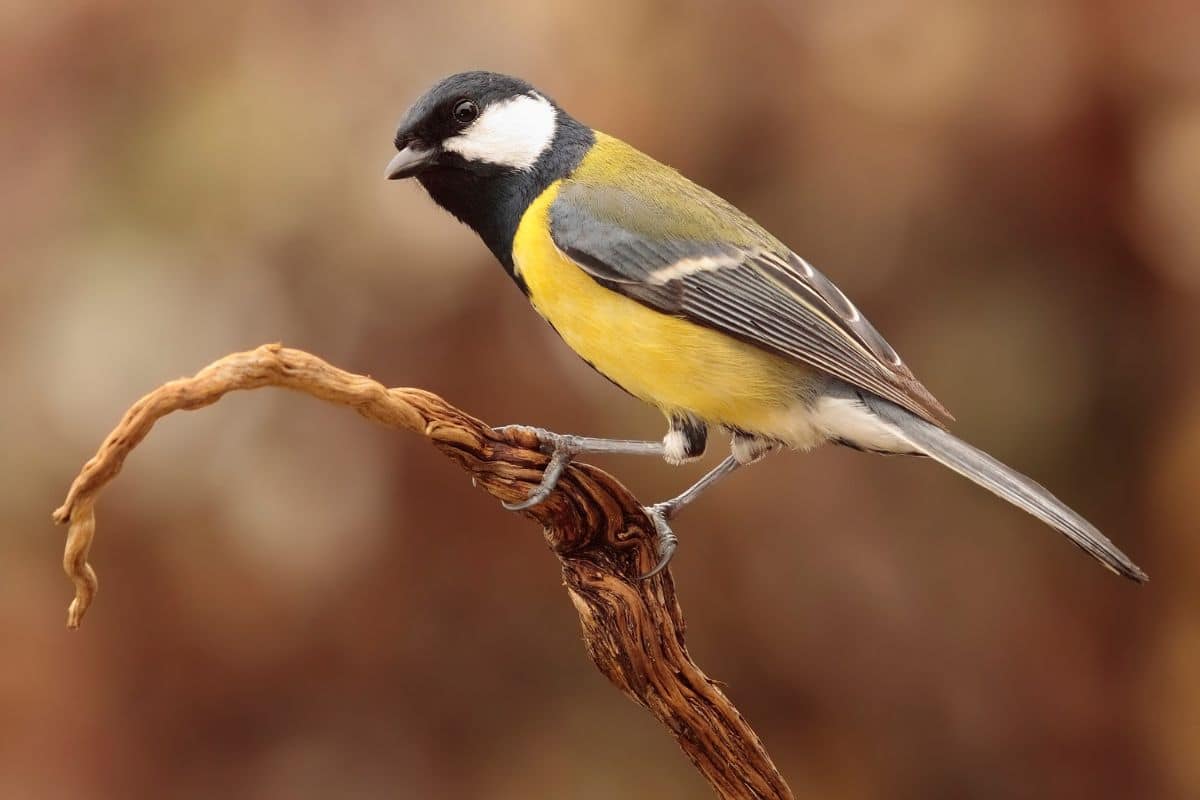
In addition to its stunning appearance, this species is known for its wide-ranging vocalizations and songs. These vocalizations include melodious warbling and harsh cries, depending on the context.
Great Tit Call
As one of the most vocal species in the tit family, it is well-known for its distinctive chattering call. The Great Tit’s call is composed of a series of sharp, two-note sounds that are quick and loud. This call may be heard year-round and sounds like “tcheet tcheet tcheet” or “tee too tee too.”
Additionally, Great Tits raise their own young with the help of specific alarm calls. These calls help parents locate each other and warn their offspring when predators may be nearby.
Despite its impressively loud voice, the Great Tit is small compared to other songbirds, with an average body size of around 14 centimeters long.
Where Do Great Tits Live
Great Tits are small-sized songbirds native to temperate regions of:
- Europe
- Asia
- North Africa
These birds are in various habitats, including forests, woodlots, orchards, gardens, barns, and city parks.
They prefer open spaces to dense thickets and are particularly attracted to sites with plenty of trees that allow them to conceal their nests.
Spotting a Great Tit
One of the most sought-after species for bird watchers is the Great Tit. This striking songbird has distinctive marks, making it easy to spot in several habitats.
To find this species, you must be patient and strategic in your search. These fast-moving birds prefer to stay hidden or perch up high in dense foliage. The key to identifying Great Tits is to look for telltale signs like small, lively movements among tree branches or low perches near the top of trees.
Intent listening can also yield good results, as these birds are known for their loud chirping calls and vocalizations throughout the day.
Do Great Tits Migrate?
Great Tits have been observed to migrate during certain times of the year. Research has shown that Great Tits rely on seasonal and scent cues from the weather and the length of daylight to relocate to new feeding sites.
In spring, they flock together in large numbers, flying north towards northern climates with abundant food sources.
These birds likely follow bird migration routes established millions of years ago. As a result, despite changes in climate and other environmental factors, Great Tits can find the resources they need to thrive.
While some populations may not always travel as far or migrate at the same time year after year, it is clear that these small but resourceful bird species have a strong migratory instinct.
What Does a Great Tit Eat?
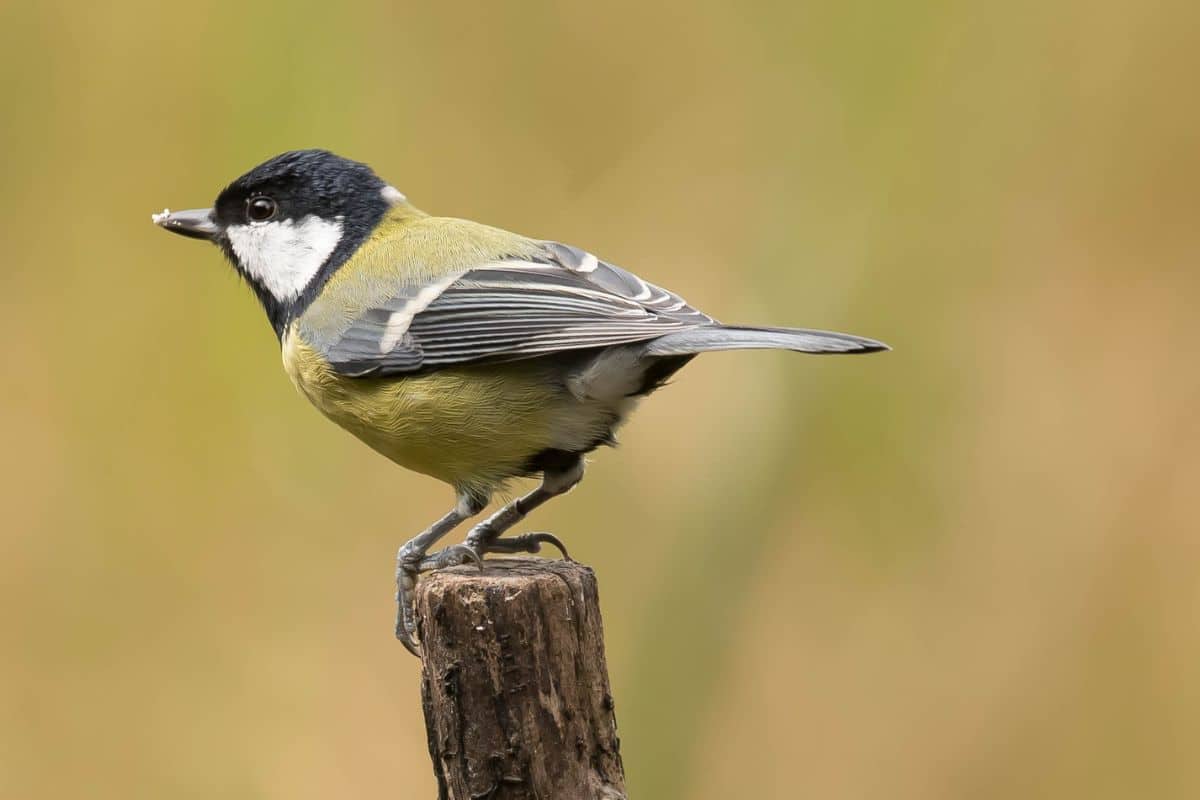
The diet of a Great Tit is varied and depends on the season. During the spring and summer months, these small songbirds consume large amounts of insects, primarily:
- Beetles
- Caterpillars
- Grasshoppers
- Flies
Additionally, they eat fruit and plant matter, as well as bird eggs and nestlings if they have access to them. Their primary carbohydrate source is seeds, though they are picky eaters.
Despite their appetite for an array of foods, there are certain things that Great Tits simply cannot eat. For example, these birds have a very difficult time digesting nuts due to their thick shells and hard outer coatings.
Additionally, Great Tit populations in urban areas may struggle with eating human-made food sources such as sugary or fatty foods found in trash cans or bird feeders. Ultimately, what a Great Tit consumes largely depends on where it lives and what it has access to at any given time.
How Do Great Tits Breed
Great Tits spend most of the year in loosely-knit flocks, moving from place to place in search of ideal breeding habitats. When the time is right, pairs of Great Tits will locate a suitable nesting site, such as a hole in a tree or other sheltered nook, and begin to build their nest.
The Female Great Tit’s Eggs
The female typically lays between six and ten eggs at a time, which she then incubates while her mate brings her food. Once the chicks hatch, both parents work together to feed their hungry offspring until they are old enough to fledge and leave the nest.
Despite their small size, great tits have been observed taking on much larger predators like squirrels to protect their chicks from harm.
What Is a Group of Great Tits Called
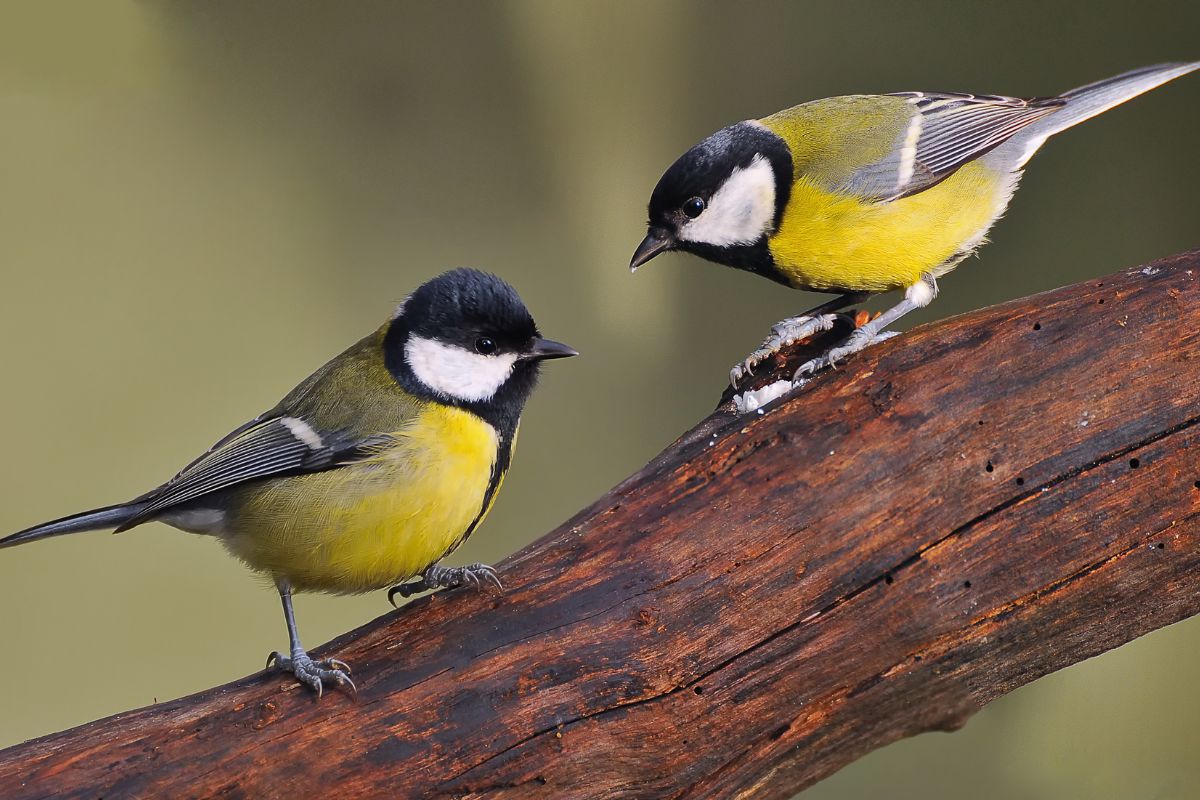
These birds are social and typically form large flocks of several dozen individuals. Although there are no definitive nouns for a group of Great Tits, they are usually referred to as a brood, banditry of Tits, or a dissimilation of Tits.
Great Tit Threats
The Great Tit is native to Europe and parts of Asia. Though it may be fairly common in its natural range, the Great Tit faces numerous threats in the modern world.
One of these threats is habitat loss due to deforestation and the spread of urban sprawl. Poor habitat quality has resulted in population declines for many Great Tit populations over the last several decades.
The loss of trees not only reduces the available nesting sites for individual birds but also decreases the number of food sources.
As increasingly urbanized environments continue to overtake their natural habitats, we must work to restore important nesting sites and protect food sources for these valuable animals.
In addition to habitat loss, Great Tits face dangers from some human-introduced predators, including house cats and raccoons.
Along with human-introduced predators, Tits also have natural predators in the wild. Great tits are highly territorial and will aggressively defend their nest sites against encroachment from other flock members.
Great Tit Conservation
Despite the Great Tit’s popularity, these birds are facing significant threats to their population due to:
- Habitat loss
- Predators
- Global warming
Initiatives have been launched in some areas to help protect this species from extinction. Efforts such as protecting nest sites, limiting pesticide use in affected areas, and encouraging concerned citizens to take part in conservation efforts have all helped to boost the Great Tit population.
What Can You Do To Help
There are many things that you can do to help protect the Great Tit or Parus major. The first step is to reduce or eliminate pesticide use in your garden, as these chemical compounds are toxic to birds and other wild animals like bees and insects.
Another important thing that you can do is plant a variety of native plants, as this will provide a more diverse and healthy habitat for wildlife. Additionally, try creating bird feeders or nesting boxes where you can provide food and shelter for these amazing creatures.
On a larger scale, you can volunteer and partner with organizations establishing protected nature reserves where trees can grow uninterrupted, while also implementing forestry practices that promote biodiversity.
For us to continue enjoying these amazing birds for future generations, greater efforts must be made to conserve and protect existing habitats in rural and urban areas.
Final Thoughts: The Great Tit
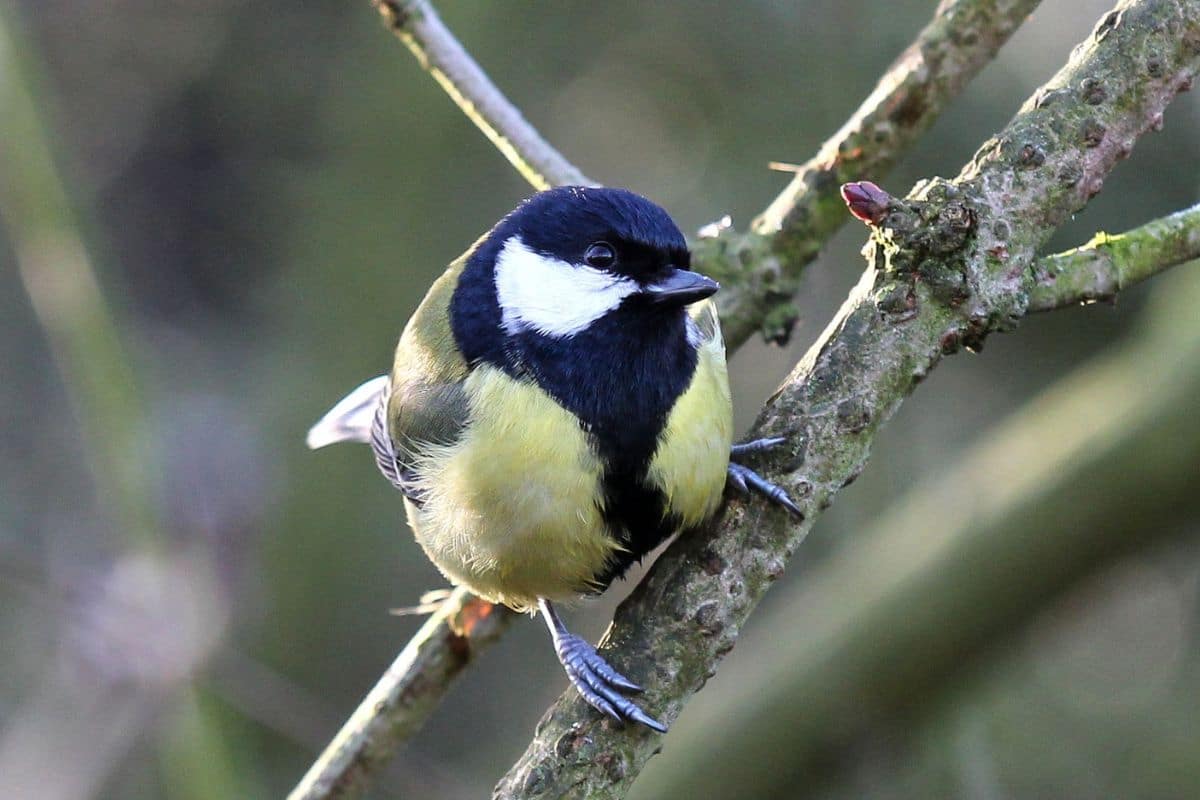
The Great Tit, also known as the Parus major, is a small songbird found throughout many parts of Europe, Asia, and Africa. With its brilliant black and white plumage, spiky crest, and bright yellow belly, the Great Tit is immediately recognizable to bird enthusiasts around the world.
Due to its wide range and adaptability, the Great Tit has evolved an extremely diverse diet and lifestyle. The bird relies on both insect prey and plant matter such as seeds and berries, depending on the season and its location.
In addition, the Great Tit’s behavioral patterns vary considerably: some populations are migratory, while others are year-round residents. Despite these differences in diet and lifestyle, one thing remains constant for all Great Tits: their ability to flourish in various habitats due to their dietary flexibility and adaptive nature.
In short, these fascinating birds are truly unique, making them an excellent subject for scientific study and study by nature enthusiasts alike.
